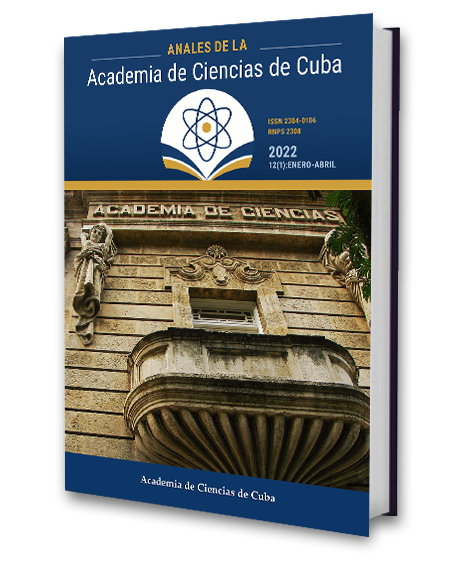Nanoaggregates of organochlorine pesticides in natural cyclodextrins as an alternative for the treatment of polluted waters
Keywords:
organochlorine pesticides, cyclodextrins, nanoaggregates, molecular modeling, radiotracersAbstract
Introduction. The mathematical modeling of the pollutant-decontaminant agent interactions is a tool of recent use to facilitate the management of hydric resources in the environment. This paper studies the interactions between two pesticides of high environmental stability that cause severe damage to health: chlordecone (CLD) and β-hexachlorocyclohexane (β-HCH) and their corresponding analogous ones labeled with radioiodine (ICLD and I-β-HCH), with natural cyclodextrins (α-, β-, and γ-CD). Methods. The Multiples Minima Hypersurface methodology, quantum chemistry calculations based on the Density Functional Theory and a topological study of the pollutants and their radiotracers with the symmetrical conformers of the three CD. The Basis Set Superposition Error existent in DFT calculations was mitigated employing a modification to Counterpoise method developed in this work. The formation of nanoaggregates was also experimentally addressed for β-HCH@CD complexes. Results. The complexes formed were classified according to the occlusion of the pollutant inside CD cavity as: total occlusion, partial occlusion and external interaction (non-occlusion). The more stable complexes were obtained when the γ-CD is the host molecule, as it was confirmed experimentally by means of results of spectroscopic and electron microscopy analysis. The possibility of using ICLD and I-β-HCH as radiotracers analogous to pesticides studied was theoretically demonstrated. Conclusions: These results suggest the utility of these nanoaggregates in the separation of these pollutants and the possibility of using CD for the management, purification and treatment of water.Downloads
Published
How to Cite
Issue
Section
License
The journal Anales de la Academia de Ciencias de Cuba protects copyright, and operates with a Creative Commons License 4.0 (Creative Commons Attribution-NonCommercial License 4.0). By publishing in it, authors allow themselves to copy, reproduce, distribute, publicly communicate their work and generate derivative works, as long as the original author is cited and acknowledged. They do not allow, however, the use of the original work for commercial or lucrative purposes.
The authors authorize the publication of their writings, retaining the authorship rights, and assigning and transferring to the magazine all the rights protected by the intellectual property laws that govern in Cuba, which imply editing to disseminate the work.
Authors may establish additional agreements for the non-exclusive distribution of the version of the work published in the journal (for example, placing it in an institutional repository or publishing it in a book), with recognition of having been first published in this journal.
To learn more, see https://creativecommons.org






